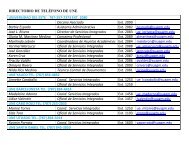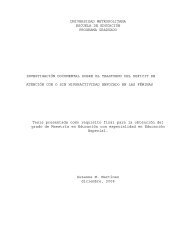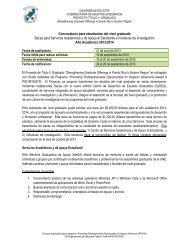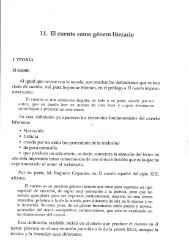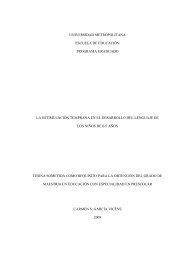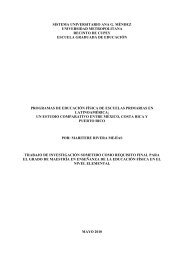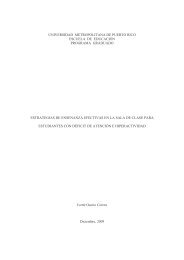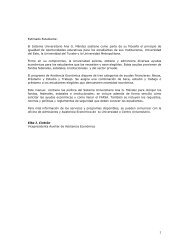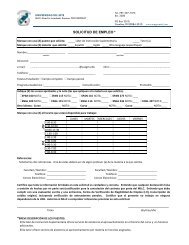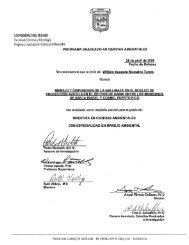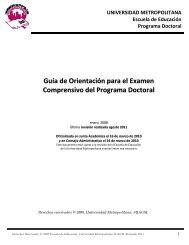Libro de Resúmenes /Proceedings - Sistema Universitario Ana G ...
Libro de Resúmenes /Proceedings - Sistema Universitario Ana G ...
Libro de Resúmenes /Proceedings - Sistema Universitario Ana G ...
Create successful ePaper yourself
Turn your PDF publications into a flip-book with our unique Google optimized e-Paper software.
Lubotzky, Phillips and Sarnak. In proving their results, RVW give upper bounds<br />
on the normalized absolute values of the zig-zag product of graphs in terms of the<br />
constituent graphs.<br />
The main results of our presentation will be elementary proofs of the eigenvalue<br />
bounds of the theorems of RVW. More specifically, when the vertices of a (small)<br />
graph B label the edges around each vertex of a (big) graph A, a larger graph A zigzag<br />
B can be constructed, whose vertices are pairs {(g, h) : g ∈ V (G), h ∈ V (H)},<br />
and adjacency is <strong>de</strong>fined using the above labeling in a nontrivial way., The resulting<br />
graph inherits (roughly) its size from the large one, it <strong>de</strong>gree from the small one, and<br />
its expansion properties from both. By setting up Largrange multipliers, we obtain<br />
better eigenvalue bound on modified Zig-Zag graph product A and B. Furthermore, we<br />
give a explicit example of Zig-Zag graph construction and a program Zig-Zag(A,B,C)<br />
which generate the adjacency matrix of the Zig-Zag product given the adjacency<br />
matrix of graph A and graph B and the permutation matrix C.<br />
Research is supported by FIPI.<br />
Vanishing Capillarity as a Selection for Young-Measure Equilibrium<br />
Solutions in a Mo<strong>de</strong>l Two–Phase Problem of Nonlinear<br />
Elasticity<br />
Timothy J. Healey 18 , Theoretical and Applied Mechanics, Cornell University.<br />
We consi<strong>de</strong>r the equilibrium of a 1-dimensional, 2-phase elastic solid in the presence<br />
of live body loads and small “interfacial” or higher-gradient elasticity, the latter characterized<br />
by capillarity coefficient ε > 0. The existence of equilibria is fairly routine,<br />
and we examine their behavior in the limit ε → 0. With physically reasonable growth<br />
conditions, we establish uniform (in ε) a-priori L ∞ -bounds on the strain fields. In<br />
the limit we obtain a continuous displacement field and a stress and ”strain” field,<br />
the latter two of which belong to L ∞ (0, 1), with each characterized by the family<br />
of Young measures associated with the weak* limit of the strains. In general, the<br />
limiting “strain” is incompatible with the limiting displacement. We show that the<br />
Young-measure characterization of the stress field has a C 1 representation (within its<br />
equivalence class) that satisfies the balance-of-forces equilibrium equation classically.<br />
18 tjh10@cornell.edu<br />
25



